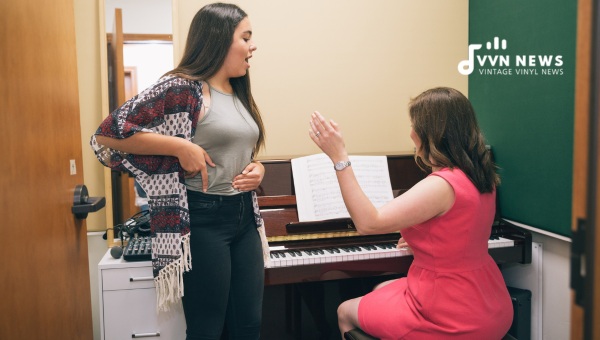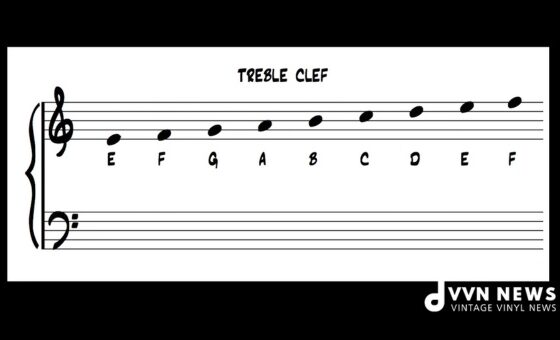Deciding how much should you charge for music lessons? It can be a tricky balance to strike.
You know the time, expertise, and passion you put into each lesson. Yet, at the same time, you want to ensure that your prices are attractive and accessible to your potential students.
Let’s unravel this puzzle together, keeping in mind that it’s not only about how to generate a steady income but also about expressing the value that music education brings.
Often, many elements influence this pivotal decision beyond just considering what others are charging.
From assessing your skill level and experience and evaluating local market rates to considering overhead costs and lesson formats, several factors can affect the appropriate pricing strategy for your music classes.
So here’s a guide aimed at helping you navigate these considerations with ease.
What Factors Determine the Pricing of Music Lessons?
There are several factors that you need to consider when deciding how much to charge for your music lessons.
1. Your Level of Expertise and Experience: Naturally, a more experienced instructor commands a higher rate. Your technical skills, years of experience, professional qualifications, and reputation in the industry can all justify charging a premium.
2. Geographic Location: The standard cost of living in your area will also influence your rates. Lessons in big cities such as New York or Los Angeles will inherently be costlier than those in smaller towns or rural regions.
3. Length and Frequency of Lessons: The duration and regularity also play a significant role when deciding rates. Longer or more frequent sessions will be priced higher than shorter or less frequent sessions.
4. Mode of Teaching: In-person classes usually have a higher price tag than online ones due to travel costs, rented studio spaces, etc.
5. Overhead Costs: Running costs such as venue rent(if applicable), instrument maintenance expenses, teaching aids, marketing costs, etc have to be factored into your pricing strategy too.
Striking a balance is key here; your goal should be pricing that’s fair to both you and the student.
How Much Should You Charge For Music Lessons?

When determining the price for your music lessons, there is no one-size-fits-all answer. The rate you land on should account for various factors.
Your Expertise
Firstly, consider your level of expertise. A music teacher with several years of teaching experience or one with a specialized degree will likely command higher rates compared to a college student providing lessons as a part-time gig.
Location & Market Rates
Your location also plays a role. What’s the going rate for private music teachers in your city? In bigger cities, higher living costs can justify increased teaching rates.
If this information isn’t readily available, try reaching out to other professionals in your area or searching online directories.
Format & Duration
The format and duration of the lesson should also be considered. In-person lessons are generally more expensive due to commuting time and transport costs.
Lengthy lessons require more of your time and should be priced accordingly to reflect that.
Overhead Costs
Then you have overhead costs like musical instruments, maintenance, studio rental (if applicable), and potentially even insurance – they ought to be factored into your pricing strategy.
Specialized Services
Offering tailored programs for different skill levels or specialized services, like preparing a student for prestigious music exams or auditions could also warrant additional charges.
Developing a thoughtful pricing structure helps you achieve fair compensation while fulfilling students’ needs.
It might take some tweaking along the way but by keeping these considerations into account; you are better positioned to price your services justifiably and gainfully.
Also Read: 25 Bestselling Artists Of All Time [Musical Icons That Broke Records]
Different Rates for In-Person vs. Online Lessons
When determining rates, it’s essential to differentiate between in-person and online lessons.
Each format has its unique costs and benefits, significantly impacting what you can reasonably charge.
In-person Lessons
In-person lessons have traditionally been considered a premium service, commanding higher rates than online classes. This is due to different reasons:
- Travel Time: If you travel to your student’s home for lessons, this takes time and money (consider gas expenses or public transportation costs).
- Studio Expenses: On the contrary, if you’re using a studio space, the overhead costs for rent and maintenance will invariably factor into your pricing.
- Materials Costs: Physical materials that may be needed for in-person lessons (like sheet music or equipment) add extra overhead.
Online Lessons
Online music lessons offer convenience both for teachers and students as they can be taken from anywhere.
Although they demand technical resources like stable internet connection and proper equipment (e.g., computer with webcam, high-quality microphone), the operational costs are typically lower:
- No Travel Time: The absence of travel means more available hours to teach additional students.
- Less Overhead: You don’t need a dedicated studio space as these lessons can be delivered from your home.
- Resource Savings: Materials can be shared digitally, minimizing the cost of physical printing.
Your online prices should reflect these savings while still offering fair compensation for your time and expertise.
It’s also worth considering that people often perceive online services as being less valuable than face-to-face sessions – something that could impact your pricing strategy.
By understanding the different dynamics in these formats, you can set thoughtful pricing models that respect both your value as an instructor and the needs of your students.
It’s all about devising a plan that enhances your success within the respective type of instruction.
Factor in Lesson Duration and Frequency While Pricing

Setting the right rate for your music lessons starts with assessing the length and regularity of classes.
Intuitively, longer lessons should be priced higher than shorter ones, but a flat hourly rate might not always be the best strategy.
Regular Length Lessons
Typically, music lessons range from 30 to 60 minutes. Most beginners, especially younger pupils, would generally opt for half-hour sessions.
On the other hand, advanced students might require longer, often hour-long lessons.
Pricing Strategy for Lesson Duration
One method to price your lessons is to set a base price for a 30-minute lesson and then add a certain amount for each additional 15-minute increment.
For example, if $25 is your base rate for a half-hour lesson, you might charge $35 for a 45-minute one and $45 for an hour lesson.
This strategy can account for extra time spent on longer classes while remaining fair and attractive to clients seeking shorter sessions.
Consider Lesson Frequency
Moreover, the frequency of classes per week can also influence pricing.
Offering discounts to students taking more than one lesson per week could be seen as an excellent incentive for steady learning progression while filling your schedule satisfactorily.
By paying attention to these factors as you set your prices, you can establish a fair yet flexible pricing structure that meets both your needs and those of your students.
How to Adjust Prices for Different Age Groups and Skill Levels?
Essential in defining your music lesson pricing model is taking into account the different age groups and skill levels of your students.
Each set possesses unique needs and demands from a music lesson, which ought to be mirrored in the price calculations.
Consider Student Skill Level
Beginners typically require more guidance compared to their advanced counterparts.
As an instructor, you might find yourself spending considerably more time developing lesson plans or additional material for beginner students.
Consequently, it may be fair to charge slightly more for beginners.
On the other hand, advanced lessons often demand a higher level of expertise from you as an instructor.
If you’re an individual who has dedicated extensive years of studies or acquired high-level professional experiences in your musical career, don’t hesitate to ask for a premium rate here.
It manifests recognition of the value of knowledge sharing based on your years of hard work.
Take into Account Age Group
Younger children often require shorter lessons than adults due to a shorter attention span and less physical stamina.
Hence, you might opt for lower charges for younger students whilst providing 30-minute sessions as opposed to typical hour-long lessons for adults.
On the flipside, older students or adults likely have specific targets they want to achieve like learning certain pieces or styles that necessitate customized teaching efforts and could be charged relatively higher.
Remember, transparency is key; communicate with clients about all factors that cater to pricing like age, expertise level lessons are tailored around, etc so they’re able to grasp why they are paying what they’re paying.
Also Read: How To Structure The First Flute Lesson? [Expert Advice]
Re-evaluating and Adjusting Your Teaching Rates

From time to time, it’s important to re-evaluate and adjust your teaching rates.
The market may change, your expenses might increase, or your experience and skills may grow. However, accomplishing this task shouldn’t be stressful.
When Should You Re-evaluate?
Generally speaking, you should be looking at your rates at least once a year.
This timeframe provides a broad enough view of any changes that have happened in your music teaching business or the industry as a whole.
Increase in Living Costs
Let’s face it: our living costs tend to increase year by year due to inflation. If offering music lessons is your main income source, you need to keep up with these changes.
Recognizing Your Professional Growth
If you’ve attended professional development courses or furthered your education through qualifications, don’t forget to recognize this by adjusting your rates.
Handling Rate Increases
When the time comes for you to increase your rates, be sure to communicate with your clients about the reasoning behind it openly.
Nurture transparency and honesty – they go a long way in maintaining trust between you and your students.
Keep in mind that re-evaluation doesn’t always mean an increase.
Sometimes you will need to lower the rates or offer discounts, especially if there is a decrease in demand or an increase in competition around.
Also Read: 19 Best-selling Albums Of All Time [Music’s Greatest Hits]
FAQs About Teaching rates
How can I determine a fair price for my music lessons?
Evaluate your experience, skill level, location, teaching format (online or in-person), and the going market rate. Consider your overhead costs and how much time you invest in each lesson.
Should I charge differently for online and in-person lessons?
Yes. Typically, in-person lessons demand a higher price due to travel time or studio rental costs.
How does the length of each lesson affect my pricing?
Longer sessions generally cost more but not always double. For instance, a one-hour lesson may not be twice as much as a half-hour class.
Should I offer discounts for package bookings or multiple students?
Offering package deals or family discounts can be an excellent strategy to secure long-term clients and increase overall earnings.
When should I consider raising my rates?
Re-evaluate your rates yearly considering factors like inflation, increased experience, higher demand for your services, or additional qualifications you have attained.
Conclusion
In the grand scheme of things, determining what to charge for your music lessons isn’t simply a matter of dollars and cents.
It’s about striking a balance between fair compensating your time and expertise while ensuring accessibility to your students.
Begin with assessing market rates, consider your overhead costs, experience level, and the format of your lessons.
Lastly, remain flexible and regularly review your rates as circumstances change.
Deciding what to charge is a dynamic process. Remember, teaching is an art, richly rewarding in ways more than financial!








